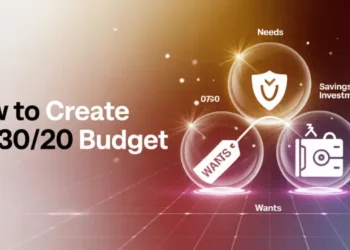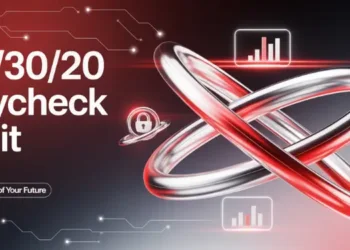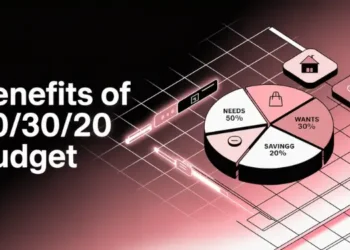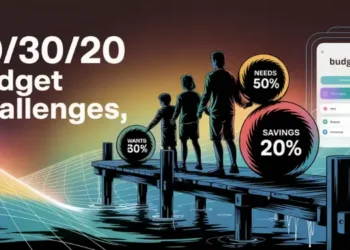Tracking your 50/30/20 budget is like setting sail from a Maine harbor. You watch lobster buoys every day to stay on track. A new study shows logging can cut down impulse buys by 18%.
So, why does it matter? “Tracking each cost is like marking each buoy,” says Dr. Nodin. We divide our monthly income into three parts for Budgeting & Saving. This percentage-based budgeting guide helps us make a budget and track it with a budget calculator. I used to overspend until we learned how to track our budget easily.
Tracking a 50/30/20 budget involves allocating net income into three fixed categories—50 % for necessities, 30 % for discretionary items, and 20 % for debt repayment or savings—and then logging every transaction against these targets. Daily or weekly reconciliation, using either manual envelopes, spreadsheets, or automated apps with bank‐sync and rule‐based sorting, ensures that each expense is correctly categorized. Custom tags and photo‐archived receipts enhance granularity, while timely cash logging prevents unrecorded outflows.
Each month, expenditures are compared to the target ratios, with visual tools (e.g., pie charts) highlighting deviations. When a category’s spending consistently exceeds its limit, funds are reallocated from other categories to restore balance. Regular technical reviews, combined with milestone‐based incentives and accountability measures, reinforce adherence, reduce impulse purchases, and drive sustained savings growth.
Key Takeaways:
- Divide income into 50/30/20 percentages.
- Log expenses within minutes for accuracy.
- Logging cuts impulse buys by 18%.
- Reconcile cash transactions with digital records weekly.
- Compare spending against target ratios monthly.
- Reallocate funds when categories exceed limits.
Choose Tracking Method That Fits Your Lifestyle
Finding the right budgeting method is like picking a compass for a hike. We’ll explore ways to track every purchase. Pick a method that fits your budget and goals without disrupting your life.
Budgeting approaches should align with individual preferences to sustain long-term useRef.: “Whiteside, E. (2024). The 50/30/20 Budget Rule Explained With Examples. Investopedia.” [!]
Compare Envelope Spreadsheet and Mobile Options
Some like the feel of an envelope system. It lets you see your money for each need. Others prefer a spreadsheet for quick spending checks.
Mobile apps also track spending automatically. They make it easy to see your spending on the move. Your choice depends on how you like to handle money.

Select Level of Detail You Prefer
Think about your financial goals and how you want to track them. A detailed system can show your spending patterns. But a simple method might make you check your budget more often.
Start by figuring out your net income. Then watch for spending areas to adjust. For tips on budgeting, see this resource.
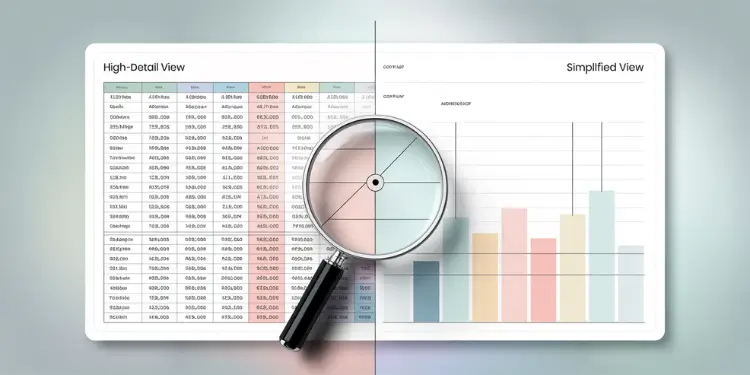
Stopwatch Step: Spend five minutes tonight setting up your system. This small effort keeps your plan clear.
Read More:
Categorize Transactions Automatically Using Budgeting Apps
These tools track every purchase easily. They sort expenses once labeled. This helps us focus on saving and managing money better.
Follow the 50-30-20 rule. Spend 50% on bills, 30% on wants, and 20% on debt. This plan helps us save and manage money easily. Some like spreadsheets, others retirement savings. Seeing all expenses helps us plan better.
Enable Bank Sync and Rule-Based Sorting

Choose an app that imports daily transactions. Set rules once. Tag rent or groceries, then relax. Each charge is filed correctly, making decisions easier.
Bank synchronization and automated sorting often require premium subscriptions and strict security configurationsRef.: “Forbes Advisor Staff. (2025). Best Budgeting Apps of 2025 – Forbes Advisor.” [!]
Create Custom Tags for Personal Nuances
Label coffee shops or local crafts with a unique tag. This shows spending patterns and helps avoid overspending. Good habits lead to better budgeting.
| App Feature | Benefit |
|---|---|
| Auto-Categorization | Speeds updates and reduces manual entry |
| Custom Tags | Makes spending more transparent for specific goals |
Try syncing one platform during lunch. Give it ten minutes to set categories. For extra tips, visit this budgeting resource and stay on track with balanced income into three parts.
Reconcile Cash Spending with Digital Records Weekly
We see each paycheck as a new chance. A study by the Federal Reserve shows that tracking cash cuts down spending by 20% [Fed savings rates]. Our budget comes alive when we track every purchase.
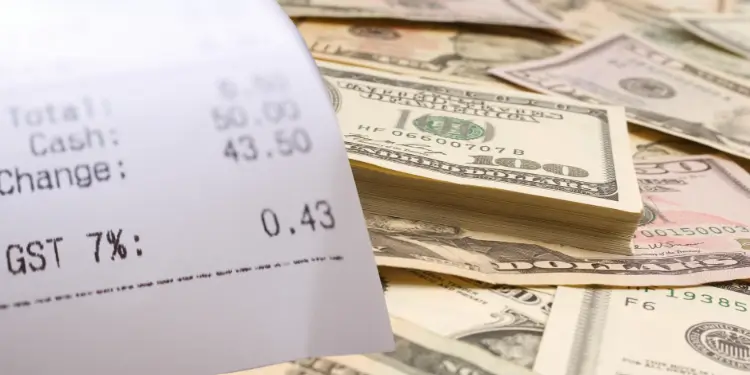
This habit helps us save more. It keeps our monthly income safe. It also helps us meet our monthly bills and pay for rent or mortgage.
It even helps us set new savings goals. This way, we always have what we need.
Cash can disappear if we don’t keep track of it. Start budgeting by dividing your income into three parts. Use the last 20% for debt or savings.
A clean checking account helps keep money organized. It waits for you to decide how to use it.
Failure to reconcile cash spending weekly can lead to substantial budget inaccuracies and overlooked expensesRef.: “Consumer Financial Protection Bureau. (2017). Consumer Insights on Managing Spending. CFPB.” [!]
Keep Small Receipts in Photo Archive
We take pictures of every receipt. It’s like keeping a log of our catches. Digital photos keep important details safe.
Receipts are easy to find and sort. You can label them for better organization.
Log Cash Within Twenty Four Hours
This quick action is like resetting after a trip. Take ten minutes to check any unrecorded bills. Record them right away to stay on track.
Intensive cash logging within 24 hours enhances accuracy but may increase cognitive load, risking inconsistent tracking over timeRef.: “Miller, J. (2024). The Pros and Cons of Cash-Based Budgeting. Everjoyed.” [!]
Analyze Category Percentages Against Target Ratios Monthly
Every month, we check our budget like we’re looking for storms on the horizon. We compare each category to our target ratio. This helps us catch when we spend too much on fun things or not enough on needs.
We look at how we spend money to understand our habits. Some families spend more on food, while others spend more on housing. We try to balance your budget so you can make steady progress.
82% of Americans claim to keep a budget, yet a third rely on paper and 20% use mental accounting, highlighting the need for regular ratio analysisRef.: “Bell, C. (2014). The 1 Task Americans Just Can’t Accomplish. Time.” [!]
Generate Visual Pie Charts for Clarity

Pie charts help us see where our money goes. Using a budget calculator can show us how we compare. We watch for big increases in bills or fees that cut into our savings.
- Compile all expenses at month’s end.
- Check total spending versus expected targets.
- Note big changes for deeper review.
Visual pie charts simplify complex spending data, enabling clearer insights and actionable decisionsRef.: “Smith, A. (2024). How to Use Visual Data for Better Financial Planning. Money Mentor.” [!]
Spot Areas Consistently Exceeding Guidelines
Sometimes, things like insurance or eating out too much take up too much money. We then move money to savings or paying off debt. One small change can make a big difference in the long run.
Stopwatch step: Take seven minutes after each bill to review. Look for any category that’s too high and adjust. This keeps your money working for your goals, not against them.
Adjust Allocations When Spending Trends Drift Upward
Think of your budget like a lobster boat. It moves with the tide. A small change can throw you off course. To track these changes, watch if your monthly spending goes up more than you like.
A flexible budget helps you spot these changes early. It lets you adjust your spending plan.
Figure out how much of your income should go to needs and wants. If fun spending goes up, find ways to cut back. This way, you can save more for the future.
When you pay off debts, use that money for fun or savings. Each time you adjust your budget, you gain control. You can save more while enjoying life.
Visit this comparison for more on balancing life changes.
If spending patterns show up for two months, take five minutes to adjust. This habit stops sudden overspending and keeps your budget safe.
| Drift Signal | Quick Fix |
|---|---|
| Unplanned increase in fun purchases | Shift a portion toward your wants limit, then boost savings |
| Needs category rising fast | Move extra from entertainment to cover gap |
Celebrate Milestones and Maintain Budget Motivation Long Term
We’ve gone from tight budgets to feeling confident about spending. We keep the momentum by celebrating our wins. This rule helps you track your budget at every step.
It’s a simple way to match expenses with percentages. This keeps your spending in line with your needs and wants. It also helps with monthly payments.
This focus on money management reduces stress. It makes sure each part of your budget meets real goals.
Set Quarterly Reward for Hitting Goals
A small treat or a day-trip can make you feel proud when you hit half of your budget for emergencies. If you’re saving for a house or paying off debt, pick a modest reward.
Regularly checking your budget with the 50/30/20 rule from this guide is key. It makes sure your money goes where it matters most. Even 30% for wants can feel easy when you celebrate milestones.
Share Progress with an Accountability Partner
Telling a friend or spouse about your progress keeps you on track. Tracking your spending with the pay yourself first method keeps you focused. Set reminders to log each purchase.
This is how we stay consistent and keep our money management on track. It helps us make progress that lasts.



